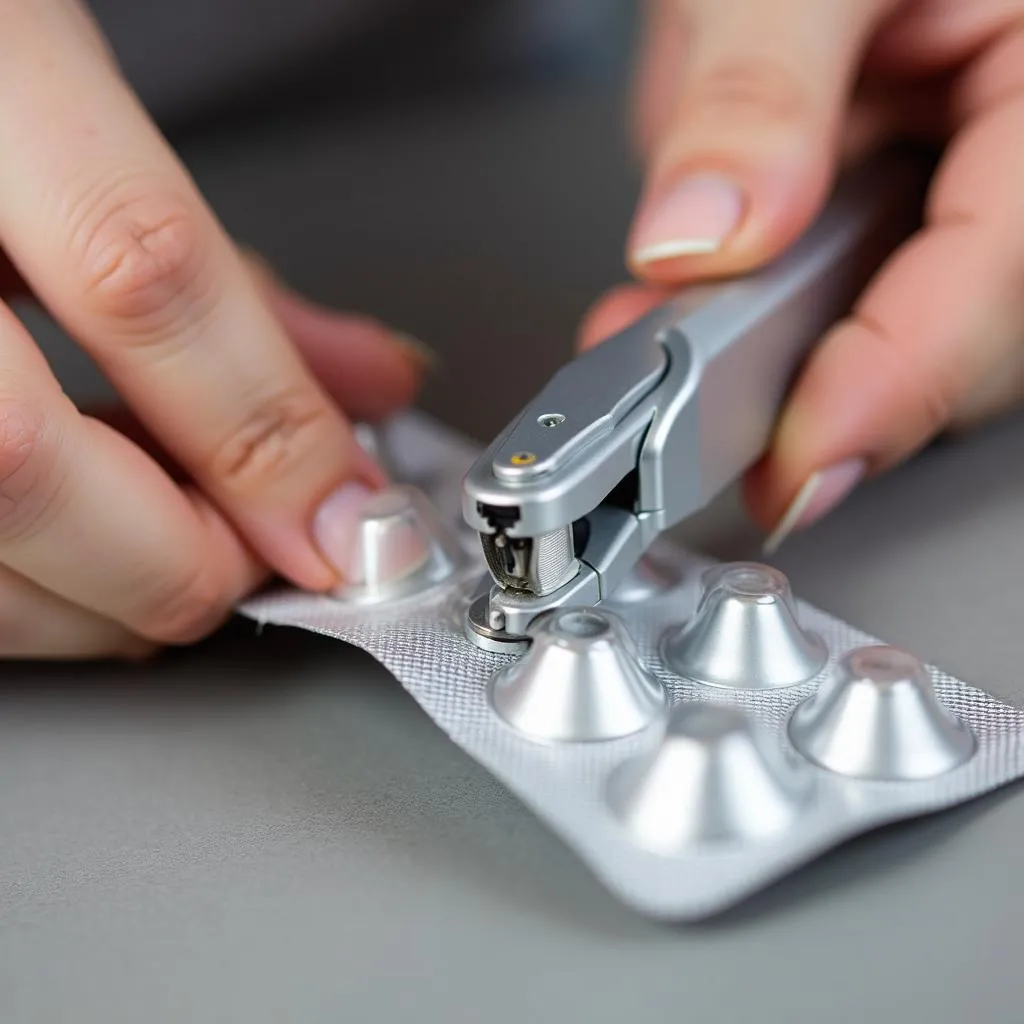Dealing with a stubborn plastic anti-theft box can be frustrating, especially when you need to access what’s inside. While these boxes are designed to deter theft, they can pose a challenge even for legitimate owners. Whether you’re trying to retrieve a misplaced purchase or simply need to open a package, this guide provides safe and effective methods to help you conquer those pesky plastic boxes.
Understanding the Challenge
Plastic anti-theft boxes employ various designs and mechanisms to secure items. Some common features include:
- Clamshell Packaging: Two plastic halves fused together, often requiring scissors or a sharp object to separate.
- Blister Packs: Items are encased in a clear plastic bubble mounted on a cardboard backing.
- RF Tags: Small electronic tags that trigger alarms if tampered with or improperly deactivated.
Identifying the Locking Mechanism
Before you begin, closely examine the plastic box to identify the locking mechanism. Look for any of the following:
- Perforated Seams: These indicate weak points designed for easy opening.
- Hidden Tabs or Latches: Some boxes have concealed tabs or latches that release the locking mechanism.
- Tamper-Evident Seals: These seals break upon opening, indicating if the box has been previously tampered with.
Tools and Techniques for Opening Plastic Anti-Theft Boxes
Remember to prioritize safety and exercise caution when using sharp objects. Always cut away from your body and wear protective gear like gloves if necessary.
Here’s a rundown of some effective methods:
1. The Scissors Technique
- Ideal for: Clamshell packaging and blister packs
- Method: Carefully insert the tip of sharp scissors into a corner or along a perforated seam. Apply gentle pressure and slide the scissors along the edge to cut through the plastic.
2. The Canned Good Opener Technique
- Ideal for: Thicker plastic packaging
- Method: This method utilizes a manual can opener to pierce through the plastic. Position the opener’s piercing point at the edge of the packaging and apply pressure to create a hole. Carefully work your way around the edges to open the box.
 Using a can opener to open plastic packaging
Using a can opener to open plastic packaging
3. Applying Heat
- Ideal for: Packaging sealed with strong adhesives
- Method: A hairdryer or heat gun can soften adhesive, making it easier to separate the plastic. Apply heat evenly to the sealed area, checking periodically to see if the adhesive has loosened.
Pro Tip: “Always choose the right tool for the job. Using excessive force or an inappropriate tool can damage the contents inside,” says Michael Reynolds, an automotive engineer and author of “The Car Owner’s Maintenance Guide.”
FAQs About Dealing with Difficult Packaging
Q: I can’t seem to open a plastic anti-theft box without damaging the contents. What should I do?
A: If you’re struggling to open a particularly stubborn box, consider seeking assistance from a retail employee or a professional with experience in handling such packaging.
 Retail employee assisting a customer
Retail employee assisting a customer
Q: I’m concerned about damaging electronic components when opening a device’s packaging. Are there any special precautions?
A: When opening electronics packaging, exercise extra caution to avoid damaging delicate components. Consider using specialized tools like anti-static wrist straps and plastic pry tools to prevent electrostatic discharge and scratches.
Q: How can I tell if a plastic anti-theft box has been tampered with?
A: Look for broken tamper-evident seals, torn edges, or any signs of forced entry. If you suspect tampering, it’s best to contact the retailer or manufacturer for guidance.
Cardiagtech: Your Partner in Automotive Diagnostics
While this guide focuses on opening plastic anti-theft boxes, we understand that car owners may encounter various technical issues. Cardiagtech offers a range of advanced diagnostic and programming solutions designed to troubleshoot and resolve automotive problems. Our products, like the [Product Name – link to product page], empower both professionals and DIY enthusiasts to diagnose and repair modern vehicles effectively.
Conclusion
Successfully opening plastic anti-theft boxes requires a combination of patience, the right tools, and a keen eye for detail. Remember to prioritize safety and choose the appropriate method based on the packaging’s design. If you encounter persistent difficulties or have concerns about potential damage, don’t hesitate to seek professional assistance. Connect with CARDIAGTECH today for expert guidance and support in all your automotive diagnostic needs.

